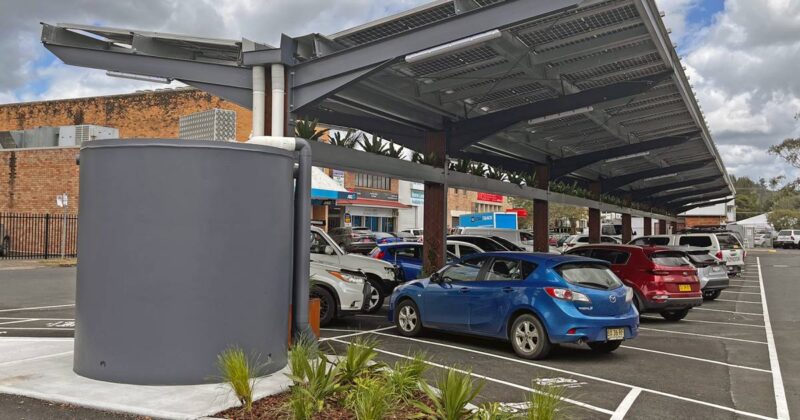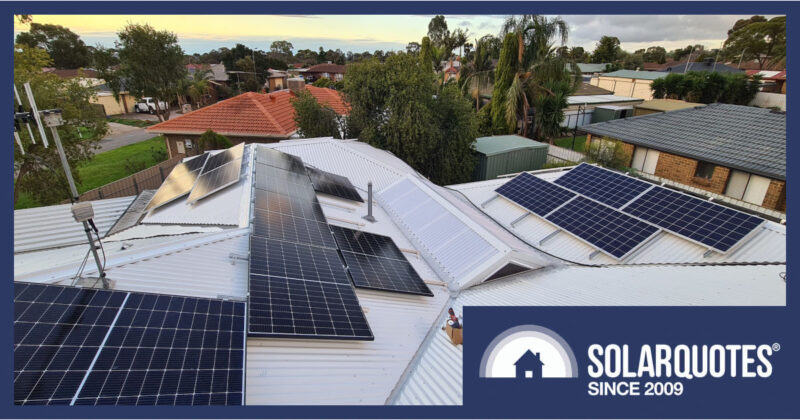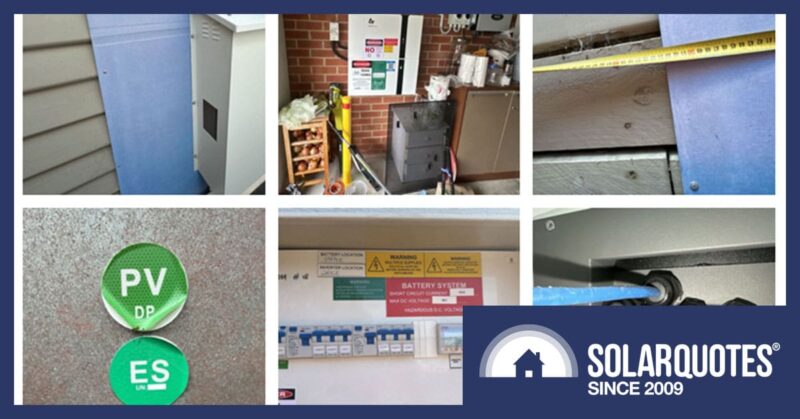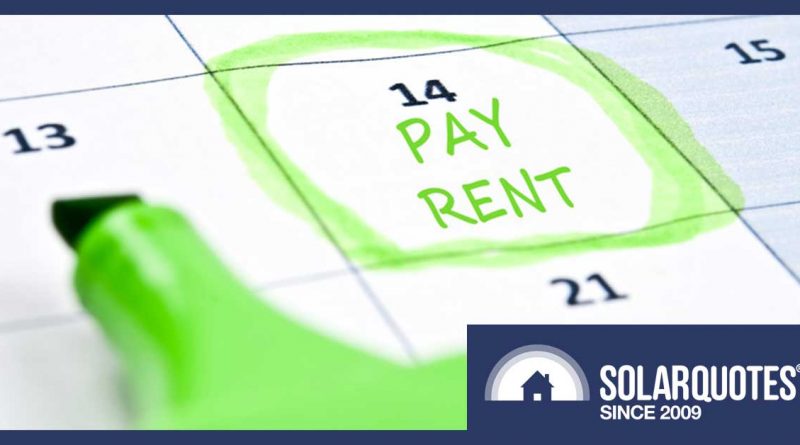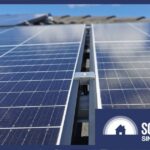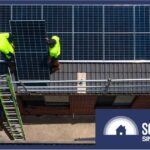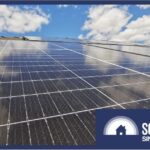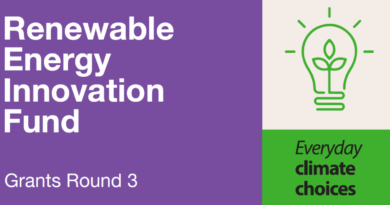Victoria’s Solar Rebates For Landlords Are Good News For Tenants Too
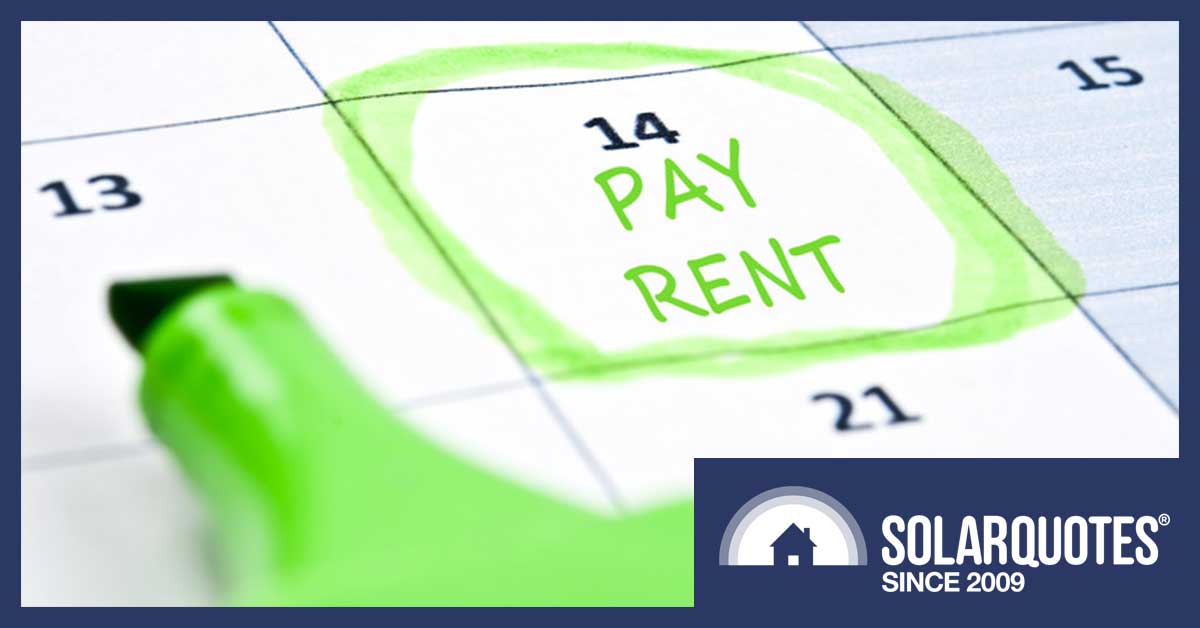
Free money & zero-interest loans to put solar panels on Victorian rental property roofs
I have good news for landlords and renters in Victoria. The state government is handing out free money to landlords: a $1,850 rebate on solar panels for rental properties that meet the requirements.
In addition, $1,850 can be borrowed as a zero-interest loan, paid off over four years at $38.54 per month. If the renter wishes, half of those repayment payments can be made by them.
So, if the tenant contributes, the landlord is looking at $2,775 of free money plus a $925 zero-interest loan in return for installing solar.
The total amount of money available upfront is $3,700. This is enough to buy a small solar system with decent quality hardware from an installer who takes pride in their work. But I recommend throwing in more money to get a larger PV system. Solar power on rental properties is becoming more common and people will prefer to rent a place with 6.6 kilowatts of solar panels rather than only 3 kilowatts. The larger system could save tenants over $15 a week more on their electricity bills. If this allows a landlord to charge an extra $10 a week in rent, the larger system may only need around 4 years to pay for itself.
Solar Victoria Piles On The Conditions
Unfortunately, it wouldn’t be a Victorian Government scheme if there weren’t a whole list of conditions that must be met. While annoying, the good news is the majority of rental properties should be eligible. But if you own many you can only use the Solar Rebate For Rental Properties for two of them each financial year.
Information on the scheme can be found on the Solar Victoria website here. There are sections for landlords and renters with an example letter people can send to their landlords to try to convince them to install solar. I think it’s a bit long-winded, so I’ve included my own version in this article for people to use.
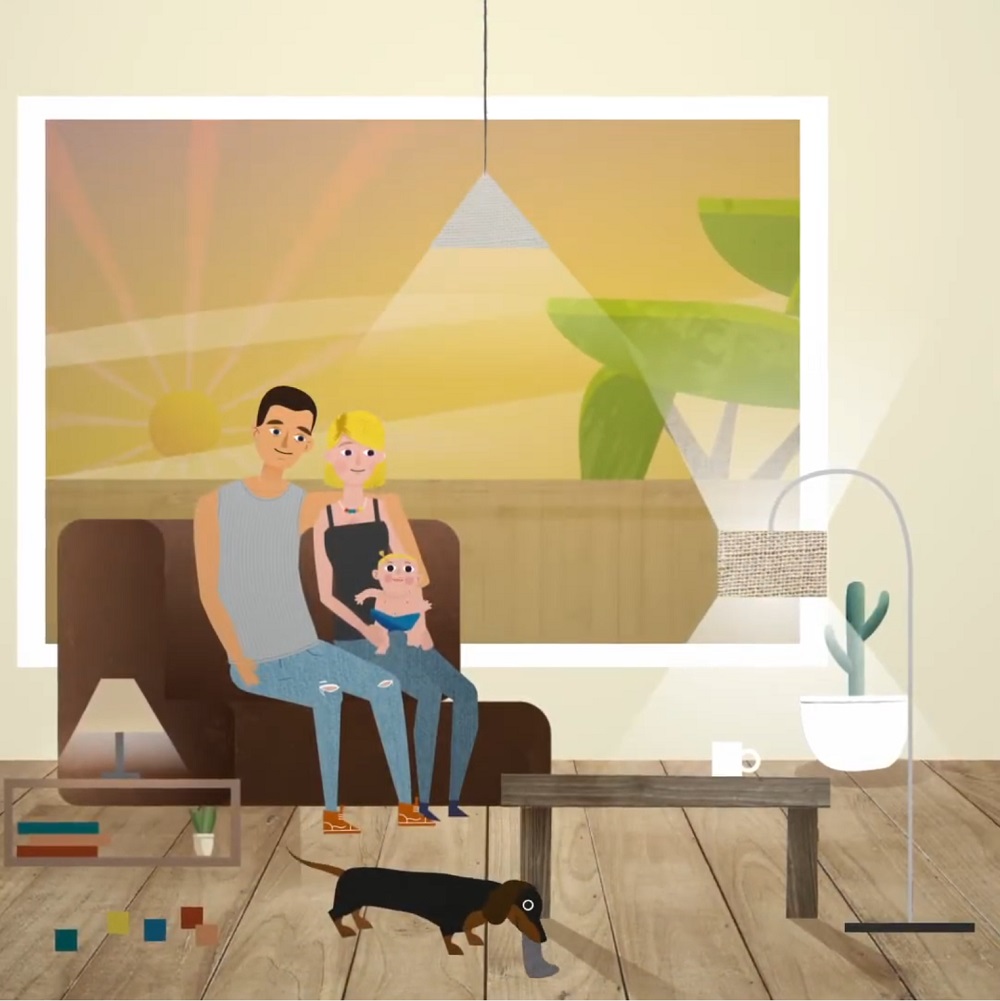
This screenshot from the Solar Rebate For Rental Properties video illustrates how typical Victorian tenants don’t have carpet, use denim nappies, and have a sausage dog who is as crazy about socks as Dobby the house elf.
Rebate And Loan Eligibility Requirements
In order to get the free money and the interest-free loan there are a list of conditions the landlord and the property have to meet. Also, the tenants must meet several criteria too. If just the landlord was involved that would make things too easy and we all know Victorians thrive on a challenge.
In order to get the $1,850 rebate1 the criteria the landlord and their property must meet are:
- The property value must be under $3 million.
- It can’t already have solar panels.
- It can’t have participated in the Solar Homes program — but that’s pretty much a given since it won’t have solar.
- The landlord can only have two properties receive the rebate in a financial year.
Criteria that involve the renters are:
- Their combined household income must have been under $180,000 per year according to their taxable income in any of the last two years.
- The landlord and renters have to sign a Solar Homes Landlord-Tenant Agreement.
- The tenants have to already be renting the place.
If, in addition to the $1,850 of free money, the landlord wants to get the interest free loan as well they will have to:
- Provide a credit report that is “satisfactory”.
Getting a credit report is free and can be done online. I did it and ended up with a rating of “excellent”:

This result was bizarre, as I’ve never received credit from a financial institution in my life. Not once have they thanked me for all the times I didn’t rob them.
Solar Homes Landlord-Tenant Agreement
The Landlord-Tenant Agreement sets out the responsibilities of the two parties. There are two different agreement forms:
- An agreement where the tenant makes no contribution to the zero-interest loan repayments.
- An agreement where the tenant does contribute to loan repayments.
In either case, the following are agreed to:
- The landlord owns the solar power system and must keep it in good repair.
- The tenants agree not to dick around with the solar system or allow anyone else to.
- The tenants get the electricity from the system and the landlords can’t charge them for it.
- The landlord is not responsible for any losses to the tenant from the system failing to supply electricity. This is despite a previously mentioned condition requiring the landlord to keep the system in good repair.
Tenant Loan Contributions
If the tenant agrees they can pay from 5-50% of each monthly loan repayment. The amount will vary according to this table:
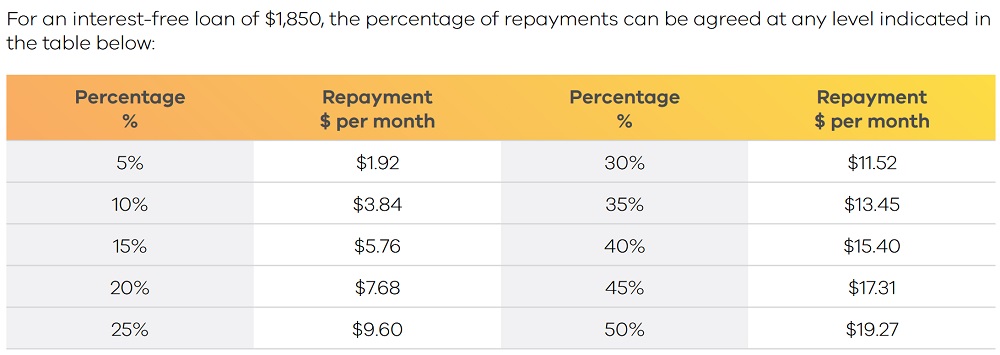
These payments are made for fours years or until the tenant moves out. These payments can’t be imposed on any subsequent tenants.
Maximum 50% Contribution Still A Good Deal For Renters
Even if the tenant makes the maximum 50% contribution, solar power still turns out to be a very good deal for them. This is the case even if it is close to being a worst-case scenario.
If we assume the following:
- The landlord installs a small, 3 kilowatt, north-facing solar system on a Melbourne property.
- The tenant’s electricity plan has a 12 cent solar feed-in tariff.
- The tenant somehow consumes no solar electricity themselves and it is all sent into the grid for the feed-in tariff.
Then the tenant will save an average of around $38 a month on electricity bills, which is almost twice the maximum $19.27 monthly payment. So the tenant is very likely to come out ahead provided they get a decent feed-in tariff.
Tenants Leaving Early Is Not A Major Problem
Tenants hate rent increases, so it looks to me that the option of having tenants contribute to loan repayments is a way to effectively increase the rent without actually increasing the rent. Rather than hit them with a rent increase to help cover the cost of the solar power system, the landlord can politely request they contribute to the loan repayment after pointing out how they are likely to come out ahead even if they make the maximum contribution.
While it may seem like it will be a major problem for the landlord if the tenant moves out before the 4 year repayment period is over, having a solar system will make the property more attractive to new tenants and should enable the landlord to charge a reasonable premium.
Bigger Solar Systems Are Better
Large solar systems save tenants more money and will allow for a higher rental premium. Also, larger solar power systems tend to cost less per watt. For this reason, I suggest spending some extra money to get a larger, good quality system which is likely to cost at least $1,500 more than the $3,700 loan + subsidy. I would suggest getting a 6.6-kilowatt system or potentially larger if the available roof space and your budget allow it, but a small solar system is better than no system at all.
An Example Letter From Tenants To Landlords
Because a solar system can save renters money even if they make the maximum loan contribution, many tenants will want to encourage their landlords to get involved in this scheme. To help them out, Solar Victoria has included an example letter they can use. However, I found it a bit wordy, so I’ve written my own for people to use.
If Solar Victoria wants to replace their example with mine or add it to their page, that’s fine with me. It would be my pleasure to help the people of the Garden State in this small way in these trying times.
I’ve assumed tenants are happy to contribute the maximum amount, provided the solar power system isn’t tiny. If this isn’t the case, be sure to alter the wording:
Dear LANDLORD NAME
I’ve got some good news. The Victorian Government is giving free money to landlords to get solar panels. Because it will increase the value of your property and save me money on electricity bills I think we should go for it. To assist with the costs I’m willing to personally contribute the maximum amount the government scheme permits.
The details are on this webpage:
https://www.solar.vic.gov.au/solar-rental-properties
In a nutshell, the Victorian government will give you $1,850 in free money if you install a solar power system. In addition to this they’ll also make a $1,850 interest free loan available that is paid back over 4 years. This will allow the installation of a solar system of of up to $3,700 with no money down.
You can get a modest sized solar system installed for this much, but the bigger the system the more attractive your property will be to tenants, so paying extra to get a larger system could be a good idea.
The repayments on the zero interest $1,850 loan come to $38.54 a month over four years. The scheme allows tenants to contribute up to 50% of these payments. Because a solar system will save me money, if you install a system that has at least 4 kilowatts of solar panels I will be happy to contribute the maximum amount allowed, which is $19.27 a month. This means we will be both be contributing the same amount towards paying off the loan each month.
There are some criteria that have to be met but I’m pretty confident you are eligible, otherwise I wouldn’t be writing this letter.
Hope to hear from you soon.
Yours sincerely
MY NAME
The Cost Of The Scheme
I’ve referred to the Solar Victoria Solar Rebate For Rental Properties as free money, but of course, the money has to come from somewhere. We know that. After all, we’re not stupid.2
The cost of the $1,850 rebate will come to $1,850. That’s pretty obvious. But on top of that, there will be administration costs and these could be considerable depending on how efficiently the scheme is run.
The cost of providing zero-interest loans is extremely low if we ignore administration costs and assume everyone pays back their loans. At the moment the Victorian Government can borrow money for three years at 0.26% interest. If I assume they can borrow for 4 years at 0.3% interest then the cost of each zero-interest loan to the state government will be $22.
Because the cost of borrowing money at the moment is so low I don’t understand why the zero-interest loan is for only $1,850. They could have made it $15,000 and it would still only cost them $181 at 0.3% over 4 years. I don’t think tenants should be permitted to contribute more to loan repayments than what they are likely to save on their electricity bills, but if the Victorian Government wants landlords to install solar panels then zero-interest loans are a low-cost way to go about it.
Red Tape Costs Money
Encouraging landlords to install solar panels is a good idea because everyone benefits from increased solar energy generation and it helps lower the cost of living for renters who, at the moment, generally can’t benefit from rooftop solar. However, the more complex the scheme and the more conditions that are attached to it, the higher the administration costs will be and the less bang will be obtained for each dollar of subsidy. Also, the simpler things are the less chance it will all backfire horribly and result in disaster.
I think the Solar Rebate For Rental Properties has too many conditions and could be much simpler. I can understand wanting to make rich people pay their own way, but the only reason for subsidizing solar power is if it provides a benefit to society. It is going to provide that benefit no matter whose roof it is on, so in this case I think being less picky is warranted. If we don’t think the rich are contributing their fair share we can always eat them later.
Thank You COVID-19
I presume the reason why this assistance is being offered to landlords is to boost the Victorian economy to help it get through the pandemic related downturn its economy is suffering. Fortunately, solar installation is a low-risk activity when it comes to the ‘Rona. You can still get solar installed and it’s not necessary for there to be any face-to-face contact.
So, if you own a rental property and want to increase its value at very low cost to you while helping stimulate the Victorian economy, then consider taking advantage of the free money and zero-interest loan now available. Just be aware that if this incentive is popular you may need to wait a while before you can get solar panels installed.
And that’s all I have to say.
Yours sincerely
‘Rona Brakels
Footnotes
Original Source: https://www.solarquotes.com.au/blog/victoria-rental-solar-rebate/
